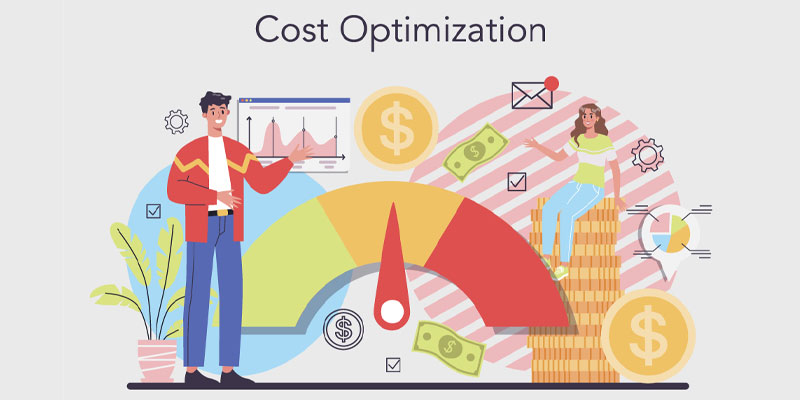Contents
Efficiency and client satisfaction are paramount in all legal environments. The client intake process is one area where law firms can significantly enhance both. Traditionally, client onboarding has been time-consuming, involving numerous phone calls, paperwork, and manual data entry. This labour-intensive approach often leads to delays, errors, and a less-than-ideal first impression for clients, which can ultimately affect the firm’s reputation and client retention.
However, with the advent of legal technology, firms now have the opportunity to automate the intake process, relieving professionals from the burden of repetitive manual tasks. This shift not only delivers a streamlined, error-free experience for clients but also frees up time for legal staff to focus on more strategic activities that add value to the client relationship. Automation safeguards that all client data is accurately captured and securely stored, reducing the risk of miscommunication or lost information.
By adopting an automated intake process, law firms can speed up client onboarding and improve the consistency and quality of the service they provide. Clients can complete intake forms at their convenience, using any device, and receive immediate confirmation that their information has been received and processed. This instant feedback not only reassures the clients but also enhances their sense of security. Indeed, efficiency and responsiveness can set a positive tone for the client relationship, leading to greater satisfaction and loyalty. Moreover, the data collected through automated systems can be easily integrated with other legal technologies, such as case management software, further enhancing the firm’s operational capabilities.
Increased Efficiency and Time Savings
Automating the legal intake process simplifies everything from start to finish. Instead of spending time manually collecting and entering client information, law firms can now use online forms that clients fill out themselves. It saves time for legal staff and significantly reduces the chances of errors that often come with manual data entry. The information clients provide is automatically transferred into the firm’s case management system, making sure all the necessary data is readily available and well-organized.
These automated systems can be set up to catch any incomplete or inconsistent information, prompting clients to fix or complete their forms before submitting them. This proactive approach helps prevent delays in processing cases, ensuring that everything is in order from the get-go. With these tasks streamlined, legal staff can shift their focus to more important work, like legal research or developing case strategies, rather than getting bogged down by routine administrative duties.
Improved Client Experience
First impressions matter; the client intake process is often the first significant interaction a potential client has with a law firm. An automated system allows clients to complete intake forms at their convenience, from any location, and on any device. This flexibility enhances the client experience, making the process more accessible and less stressful. What’s more, the system can provide immediate feedback or follow-up, a feature that significantly enhances client satisfaction and ensures that clients feel valued and attended to from the very beginning.
Offering an exceptional client experience can be a key differentiator in a competitive legal market. Clients who feel valued and well-cared for from their first interaction are more likely to positively perceive the firm, recommend its services to others, and remain loyal for future legal needs. By leveraging automation in the client intake process, law firms can establish that their clients’ first experience is seamless, efficient, and positive. This strategic advantage sets the foundation for a strong, lasting relationship, demonstrating the firm’s commitment to client satisfaction.
Enhanced Accuracy and Consistency
Enhanced accuracy and consistency in the client intake process streamline the initial stages of client interaction and lay the foundation for a successful legal case. By utilizing automated intake forms, law firms can reduce the potential for human error that often occurs during manual data entry. Including mandatory fields ensures that every piece of crucial information is captured, leaving no room for gaps that could lead to complications.
In addition, the ability to customize these forms for specific practice areas is a significant advantage. For instance, a personal injury law firm can customize its intake forms to include detailed questions about the injury, medical treatments, and insurance information, such as the type of injury, incident date, and insurance company name.
A real estate law firm can tailor its intake forms to capture property details, transaction histories, and financial information, including fields for the property address, previous owners, and mortgage details, ensuring that the data collected is comprehensive and relevant to the case.
Furthermore, consistent intake procedures foster a sense of professionalism and reliability, both of which are crucial for building trust with new clients. When clients see that their information is being handled systematically and thoroughly, it reassures them that their case is in capable hands, making them feel more secure and confident. As a result, it can elevate client satisfaction and set the tone for a positive attorney-client relationship.
Lastly, the consistent and accurate data gathered through these automated forms can be easily integrated into other legal technologies, such as case management systems, CRM software, and document automation tools. This seamless integration further enhances efficiency, allowing legal teams to focus on strategy and case development, making them feel more strategic and forward-thinking, rather than administrative tasks.
Reduced Manual Errors
Automating your legal intake process helps cut down on the mistakes that often happen with traditional, paper-based systems. When you’re entering data by hand, there’s always a risk of getting things wrong—whether it is recording incorrect information, misreading someone’s handwriting, or accidentally leaving something out. These kinds of errors can cause delays, lead to miscommunications, and even result in legal issues.
With automation, you capture information in a consistent, standardized way, which greatly reduces the chance of making mistakes. Automated systems make sure that all the necessary fields are filled out before anything gets submitted, and they can even check the accuracy of the data in real-time, like verifying contact details or document formats. This kind of precision not only makes the intake process smoother but also guarantees that you have high-quality client data, which leads to better case management and ultimately, better outcomes for your clients.
Better Data Management and Accessibility
All client data is stored digitally with automated intake processes, making it easier to manage and access. A centralized storage allows for quick retrieval of client information, which is particularly beneficial in urgent situations or when multiple staff members need access to the same data. Furthermore, digital records are more accessible to update and maintain, reducing the clutter and inefficiency associated with physical paperwork. The transition from physical to digital storage will be a phased process, with adequate training and support provided to all staff members to secure a smooth and successful implementation.
The advantages of centralized digital storage extend far beyond convenience. In situations where quick decision-making is crucial—such as during a court hearing, settlement negotiation, or client consultation—having immediate access to accurate and up-to-date information can make all the difference. Automated intake systems make lawyers certain and support staff can quickly pull up relevant client details without sifting through stacks of paper files, thereby saving valuable time, reducing stress, and allowing for more focused and effective work.
Another significant benefit of digital records is their ease of maintenance. Unlike physical documents, which can become lost, damaged, or misfiled, digital records are less prone to such risks. They can be backed up regularly to prevent data loss, ensuring the firm’s information remains secure. As long as, updating digital records is a straightforward process; changes can be made quickly and accurately without reprinting or reorganizing physical files. Such secure system reduces the risk of outdated information lingering in the system and minimizes the administrative burden on the firm’s staff, providing a reliable and secure data management solution.
Environmental Benefits
Automating your legal intake process offers substantial environmental benefits alongside its operational advantages. By reducing reliance on paper-based forms and manual data entry, automation significantly decreases paper waste and minimizes the need for physical storage, relieving your firm from the burden of managing large volumes of documents. This transition to a digital process helps lower your firm’s carbon footprint by reducing energy consumption associated with printing, scanning, and transporting paper documents. Additionally, automated systems often integrate with cloud-based platforms, reducing the environmental impact by enabling remote work and reducing the need for commuting. Embracing automation enhances efficiency and supports your firm’s commitment to sustainability.
Increased Security and Compliance
Increased security and compliance are paramount in the legal industry, where the protection of client information is not just a priority but a legal obligation. Automated intake systems significantly enhance the security of sensitive client data by incorporating advanced security measures often beyond traditional paper-based systems’ capabilities. These systems are designed to be adaptable to different legal contexts, ensuring that they can meet the specific needs of various law firms and organizations.
One of the key security features of automated intake systems is encryption. Encryption confirms that data is converted into a secure format that can only be accessed by authorized users with the correct decryption key. This means that even if a breach were to occur, the information would be unreadable to unauthorized parties, providing an additional layer of protection against data theft and cyberattacks.
Secure cloud storage is another critical component of these systems. Unlike physical storage, which can be vulnerable to environmental hazards, theft, or unauthorized access, cloud-based storage offers robust protection through regular backups, redundancy, and sophisticated access controls. The robustness of these measures provides a strong sense of security, knowing that the data is well-protected. Cloud providers often employ state-of-the-art security protocols, including firewalls, intrusion detection systems, and continuous monitoring, to safeguard client data, hence it validates the information remains protected, even in the face of potential threats.
User authentication is also a vital aspect of automated intake systems. By requiring users to verify their identity before accessing sensitive data, these systems prevent unauthorized individuals from accessing client information. Multi-factor authentication (MFA), which requires users to provide two or more verification factors (such as a password and a fingerprint), is increasingly becoming the standard in legal technology and reduces the risk of unauthorized access, even if login credentials are compromised.
Compliance with legal and regulatory requirements is another crucial benefit of automated intake systems. Data protection laws, such as the General Data Protection Regulation (GDPR) in Europe or the California Consumer Privacy Act (CCPA) in the United States, impose strict guidelines on handling personal data. Automated systems can be configured to ensure that all client information is collected, stored, and processed by these regulations. To do so, it sets up the system to automatically manage consent forms, track data access, and ensure data retention policies are followed, making it easier for law firms to adhere to these laws.
Automated intake systems often include audit trails, which record every action taken on a client’s data. This feature is invaluable in demonstrating compliance during audits or in the event of a data breach investigation. Audit trails provide a clear and detailed record of who accessed the data, what changes were made, and when these actions occurred. This level of detail helps law firms maintain transparency and accountability, keeping them informed and in control of their data-handling processes.
Ultimately, the enhanced security and compliance provided by automated intake systems offer a profound sense of peace of mind to both law firms and their clients. Clients can be assured that their sensitive information is being handled with the highest level of care. At the same time, firms can confidently navigate the complex landscape of data protection laws, knowing they have robust systems in place to safeguard their client’s data.

Scalability for Growing Firms
Scalability is a crucial advantage of automating the legal intake, especially for growing law firms. As your firm expands, the manual processes that once handled client onboarding efficiently can become bottlenecks, leading to delays, errors, and declining client satisfaction. Automation offers a liberating solution that scales effortlessly with your firm’s growth, relieving you from the burden of manual tasks.
With automation, the intake process can handle an increasing volume of clients simultaneously, ensuring that each new client receives the same level of attention and accuracy. By reducing human errors, automation not only improves operational efficiency but also allows your firm to maintain high service standards as it grows, thereby enhancing client satisfaction.
Meanwhile, automation reduces the need for additional staffing or resources to manage the growing workload. The technology can seamlessly integrate with other systems, such as case management or CRM software, providing a reassuring enhancement to the ability to scale without sacrificing quality. It enables law firms to focus on strategic growth initiatives, knowing that their client intake process can keep pace with their expanding client base.
Cost-Effectiveness
Cost-effectiveness is one of the most compelling reasons law firms adopt automated intake systems. While the initial investment in technology and training may seem substantial, the return on investment (ROI) quickly becomes evident through substantial long-term savings and enhanced operational efficiency.
One of the most immediate financial benefits of an automated intake system is reduced manual labor costs. Traditional client onboarding often involves multiple administrative tasks—such as data entry, document filing, and follow-up communications—that require significant time and effort. By automating these processes, law firms can drastically reduce the hours spent on routine tasks, freeing up staff to focus on higher-value activities, such as client interaction and case strategy. It leads to more productive use of personnel and allows the firm to operate with a leaner administrative team, resulting in lower payroll expenses.
The efficiency gained from automation also contributes to higher client satisfaction and retention, critical factors in a firm’s profitability. When clients experience a smooth, hassle-free onboarding process sets a positive tone for their relationship with the firm. Satisfied clients are more likely to return for future legal services and refer others, generating new business without the need for expensive marketing campaigns. Furthermore, the consistency and professionalism demonstrated by an automated intake process can enhance the firm’s reputation, attracting higher-value clients and cases that contribute to the bottom line.
Data-Driven Insights
Automated intake systems are instrumental in the evolution of law firms, providing a competitive advantage in an increasingly data-driven legal landscape. These systems facilitate the collection and analysis of data, opening up new avenues to streamline operations, fine-tune strategies, and deliver superior service to clients.
One of the most significant advantages of automated intake systems is their ability to systematically aggregate and analyze data, significantly boosting the efficiency of the intake process. Every interaction with a potential client, from the initial inquiry to the completion of the intake process, generates valuable data points. These data points, including demographic information, case types, referral sources, common legal issues, and the time to onboard new clients, when analyzed collectively, provide a comprehensive overview of the firm’s client base and the effectiveness of its intake procedures.
Data analysis is a powerful tool that empowers law firms to make strategic decisions based on identified patterns. For instance, a surge in inquiries related to a specific area of law can inform resource allocation, training investment, or marketing adjustments, enhancing the firm’s effectiveness in meeting client needs.
Data from the intake process is a valuable tool for refining marketing strategies. By analyzing the sources of client inquiries, firms can determine the most effective marketing channels and allocate their budgets strategically. This data also guides the development of targeted marketing campaigns that resonate with potential clients’ specific needs and concerns.
Understanding the most common legal issues clients face is not just about improving overall client service, it’s about gaining a strategic advantage. By tracking common questions or concerns raised during intake, firms can develop more informative and responsive communication materials, such as FAQs, brochures, or online resources. These materials can help address client concerns upfront, reducing the need for follow-up questions and enhancing the client’s overall experience. Consequently, such understanding allows firms to proactively offer solutions or additional services that meet these needs, thereby deepening client relationships and fostering long-term loyalty.

Attracting More Clients
One advantage of automating the legal intake process is that it can help attract more clients. By streamlining and optimizing the intake process, potential clients experience a more efficient, user-friendly, and responsive interaction with the firm from the beginning. Automated systems confirm that inquiries are promptly addressed, information is accurately collected, and follow-up is consistent, all contributing to a positive first impression. Therefore, it can differentiate the firm from competitors, increase client satisfaction, and lead to higher conversion rates of inquiries into retained clients.
Increased Referrals
One advantage of automating the legal intake process is the potential for increased referrals. Clients who experience a smooth, efficient, and professional onboarding process are more likely to be satisfied with their overall experience. Satisfied clients are more inclined to recommend the firm to others, leading to more referrals. Also, an automated intake system ensures that no potential client is overlooked, and that follow-up is consistent helping build trust and reinforces the firm’s reputation for reliability and client care, further encouraging word-of-mouth referrals.
Comparing Traditional vs. Automated Legal Intake
In the evolving landscape of legal practice, the client intake process is a critical aspect of managing a law firm’s operations. The debate between traditional and automated legal intake processes often centers around efficiency, client experience, and cost-effectiveness.
Traditional legal intake offers several advantages, particularly in providing a personal touch. This method often involves face-to-face meetings or phone calls, allowing for a more personalized experience that can help build trust and rapport with potential clients. Additionally, because the process is handled manually, there is more flexibility in responding to each client’s unique needs, ensuring that no details are overlooked. A hands-on approach also allows for more in-depth questioning and discussion, which can lead to a better understanding of the client’s case from the outset. However, traditional intake is often time-consuming, requiring more time from both the client and the firm. It can lead to delays, primarily if the firm handles many cases. The manual process can be labour-intensive, leading to higher operational costs and a higher risk of human error, potentially resulting in mistakes that could be costly to correct. Moreover, the process may vary depending on who conducts the intake, leading to consistency in how information is collected and processed.
Automated legal intake, on the other hand, offers a different set of advantages, particularly in terms of efficiency. Automated systems streamline the intake process, allowing for quicker data collection and processing. This significantly reduces the time needed to start working on a case, potentially increasing the firm’s productivity. The approach is also cost-effective, as automation reduces the need for extensive staff involvement in the intake process, thereby lowering operational costs. It also minimizes the risk of human error, reducing the potential for costly mistakes and consistency and standardization, as the same questions are asked the same way every time, leading to more reliable data collection. However, automation can sometimes feel impersonal to clients, particularly those who prefer a human touch when discussing sensitive legal matters. Implementing an automated system can involve significant upfront costs for software, training, and integration with existing systems. Like any technology, computerized systems can experience glitches or downtime, disrupting the intake process if not properly managed.
The choice between traditional and automated legal intake ultimately depends on your firm’s needs and resources. The conventional approach might be more suitable for smaller firms focusing on personalized service and a manageable caseload. Conversely, larger firms or those looking to scale operations may find that automated intake systems offer the efficiency and cost savings needed to handle more cases. However, a hybrid approach that combines the personal touch of traditional intake with the efficiency of automation could provide the best of both worlds. It certifies that clients feel valued while the firm operates at peak efficiency, striking a balance between personalization and productivity.
Automating Legal Intake Process with RunSensible
To boost the efficiency and effectiveness of client onboarding, RunSensible offers a robust solution by automating the legal intake process. This technology streamlines the collection and management of client data, allowing law firms to reduce manual errors, improve accuracy, and save valuable time. With RunSensible, firms can easily customize intake forms to align with specific practice areas, ensuring that all relevant information is captured accurately from the start. The integration with case management systems further enhances data accessibility and organization, leading to a more seamless and professional client experience. This not only elevates client satisfaction but also positions the firm to handle a growing volume of cases without compromising service quality.
Disclaimer: The content provided on this blog is for informational purposes only and does not constitute legal, financial, or professional advice.







